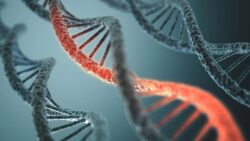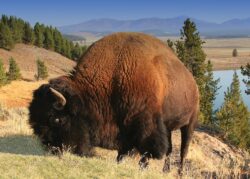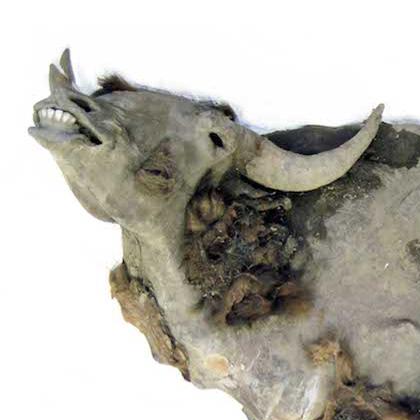Scientists recently discovered a near perfectly mummified bull buffalo in the Siberian permafrost. The front half of this 8,000-year-old bull contains perfectly preserved soft tissue. Since the tissue is relatively fresh, there is a chance that it could be preserved and cloned. The brain and other soft tissues were removed for study.
What would this mean for the existing buffalo survivors? The native bison that lived in north America are extinct. These Bison were Huge. Some plains bison and other subspecies still survive in commercial herds, native lands, public lands and parks.
Yellowstone Forest bison were also extinct. The current bison were survivors of plains bison that were donated by the railroad mogul Harriman ranch. 21 buffalo were released into Yellowstone Park in 1902. Since then, the herd has grown to over 5,000.
Buffalo were almost hunted to extinction. These amazing critters were the Wawa store for pioneers, native peoples, and many natural predators. Their waste fertilized the dense and abundant prairie grasses. Their numbers were counted in the millions. It was thought that if you removed the buffalo, you could remove the native peoples. General Sherman proposed this plan in order to defeat the warring Indian tribes. He also used the same strategy in the Civil War to destroy the Confederate army in the south. Destroy the food source and the enemy would have to surrender.
What would happen if a new strain of bison genes were re-introduced into the current bison herds? There are no pure buffalo strains left. Some have been inbred with cattle genetics. Commercial herds are about raising expensive meat, not saving bison from extinction or restoration.
In Montana and Wyoming, bison have been reintroduced onto Reservations and other public lands. These critters need to roam so fencing needs to be in place to keep the critters contained. Bison and elk carry a deadly disease called Brucellosis. This disease can destroy domestic cattle and regulations prevent them from mixing together.
Each year, surplus bison migrate out of Yellowstone Park and are kept in quarantine to check for Brucellosis. If they test positive, they are butchered, and the meat is given to native tribes. If they are healthy, they are now being transferred back to Native lands. Local tribes can also hunt buffalo. In this way, the National Park Service can manage the bison herd at around 4,000 critters, which is a healthy population for the ecosystem.
Wolves in Yellowstone Park are also not native to the area. Reintroduced wolves came from Canada and are a larger and more aggressive species than the original population. Wolves help to manage the numbers of deer, elk, and bison. The chance of finding original genetics is unlikely.
For now, we can enjoy more Buffalo in Yellowstone Park and Montana than have existed in well over 150 years.
Montana Grant



